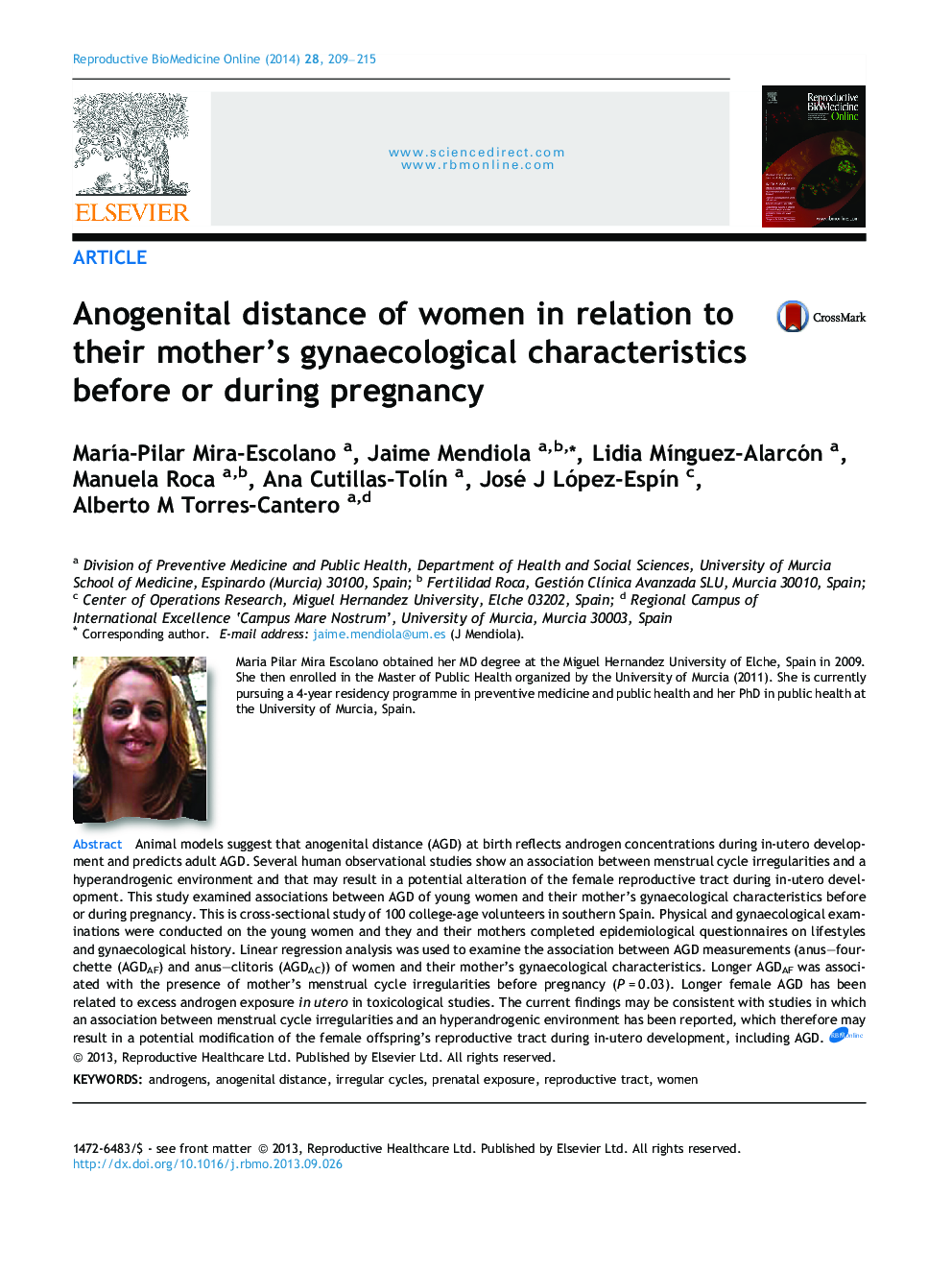| کد مقاله | کد نشریه | سال انتشار | مقاله انگلیسی | نسخه تمام متن |
|---|---|---|---|---|
| 3970286 | 1256715 | 2014 | 7 صفحه PDF | دانلود رایگان |
Animal models suggest that anogenital distance (AGD) at birth reflects androgen concentrations during in-utero development and predicts adult AGD. Several human observational studies show an association between menstrual cycle irregularities and a hyperandrogenic environment and that may result in a potential alteration of the female reproductive tract during in-utero development. This study examined associations between AGD of young women and their mother’s gynaecological characteristics before or during pregnancy. This is cross-sectional study of 100 college-age volunteers in southern Spain. Physical and gynaecological examinations were conducted on the young women and they and their mothers completed epidemiological questionnaires on lifestyles and gynaecological history. Linear regression analysis was used to examine the association between AGD measurements (anus–fourchette (AGDAF) and anus–clitoris (AGDAC)) of women and their mother’s gynaecological characteristics. Longer AGDAF was associated with the presence of mother’s menstrual cycle irregularities before pregnancy (P = 0.03). Longer female AGD has been related to excess androgen exposure in utero in toxicological studies. The current findings may be consistent with studies in which an association between menstrual cycle irregularities and an hyperandrogenic environment has been reported, which therefore may result in a potential modification of the female offspring’s reproductive tract during in-utero development, including AGD.Rodent models suggest that perineal length at birth reflects male hormone concentrations (androgens) during in-utero development and predicts adult perineal length. Several human studies show a relationship between menstrual cycle irregularities and an excessive androgen environment. We hypothesize that androgen excess may result in a potential alteration of the female reproductive tract during in-utero development. Our aim was to examine associations between perineal length of young women and their mother’s gynaecological characteristics before or during pregnancy. This is a study of 100 college-age volunteers in Southern Spain. Physical and gynaecological examinations were conducted on the young women and they and their mothers completed epidemiological questionnaires on lifestyles and gynaecological history. We used multivariate analyses to assess the association between perineal length of women and their mother’s gynaecological characteristics. Longer perineal length was associated with the presence of mother’s menstrual cycle irregularities before pregnancy. Longer female perineal length has been related to excess androgen exposure in utero in rodent studies. Our findings may be consistent with previous studies in which an association between menstrual cycle irregularities and an excess of androgen has been reported, which therefore may result in a potential modification of the female offspring’s reproductive tract during in-utero development, including perineal length.
Journal: Reproductive BioMedicine Online - Volume 28, Issue 2, February 2014, Pages 209–215
